Exxelia expose à Electronica China - Stand E5 5580 -
Exxelia présentera ses dernières innovations sur le salon Electronica China – stand E5 5580 – du 14 au 16 à Shanghai, Chine.
Ultra low ESR, high RF power and high self-resonant frequency
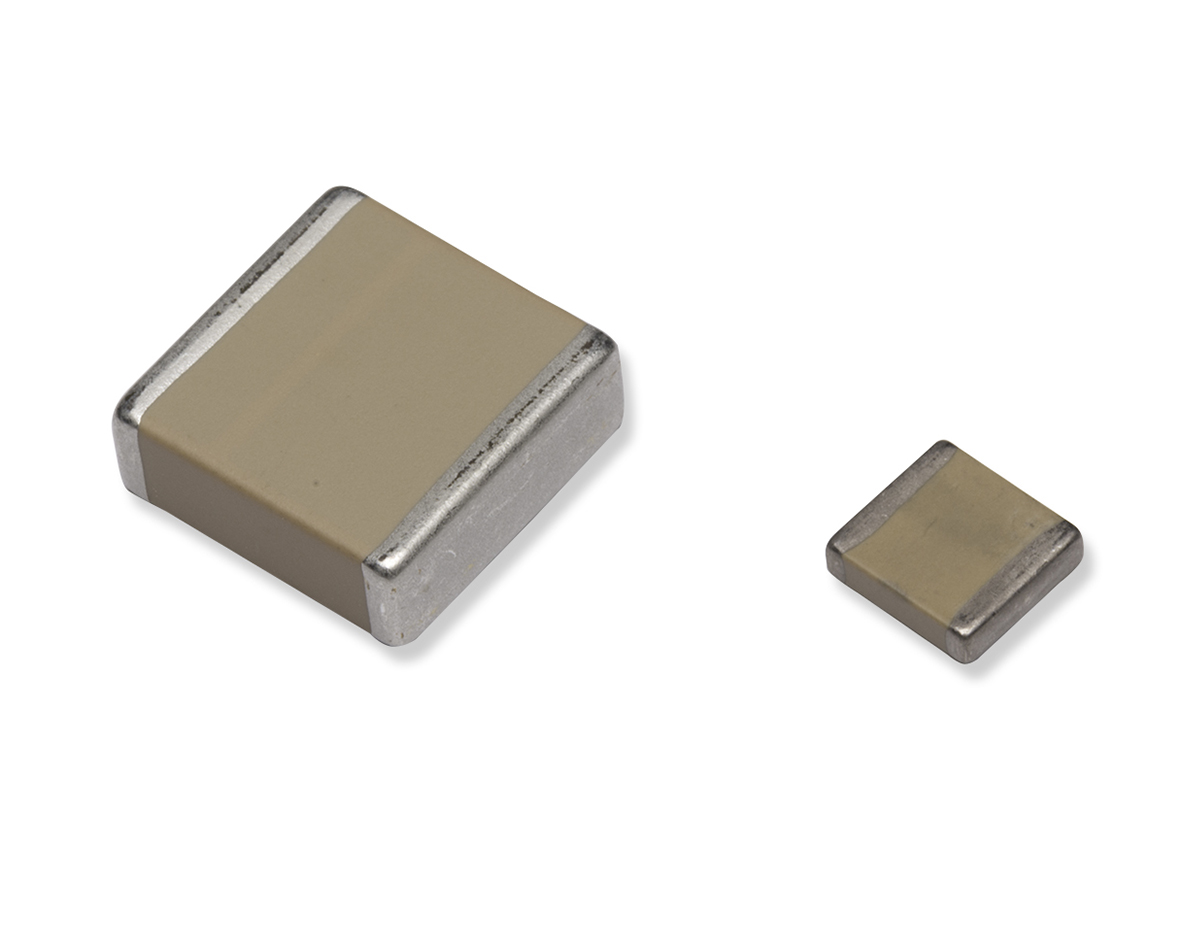 The new NHB series is a complete range of MLCC based on NPO dielectric material providing a very high Self Resonant Frequency and limiting the parasite Parallel Resonant Frequencies. The series is available in 1111 size with capacitance ranging from 0. 3pF to 100pF. NHB series offers excellent performance for RF power applications at high temperature up to 175°C and at 500 VDC. The lowest ESR is obtained by combining highly conductive metal electrodes and proprietary of new NPO low loss rugged dielectrics. NHB series particularly fits for high power and high frequency applications such as: cellular base station equipment, broadband wireless service, point to point / multipoint radios and broadcasting equipment.
The new NHB series is a complete range of MLCC based on NPO dielectric material providing a very high Self Resonant Frequency and limiting the parasite Parallel Resonant Frequencies. The series is available in 1111 size with capacitance ranging from 0. 3pF to 100pF. NHB series offers excellent performance for RF power applications at high temperature up to 175°C and at 500 VDC. The lowest ESR is obtained by combining highly conductive metal electrodes and proprietary of new NPO low loss rugged dielectrics. NHB series particularly fits for high power and high frequency applications such as: cellular base station equipment, broadband wireless service, point to point / multipoint radios and broadcasting equipment.
Felsic HV, long lifetime and high voltage screw terminal
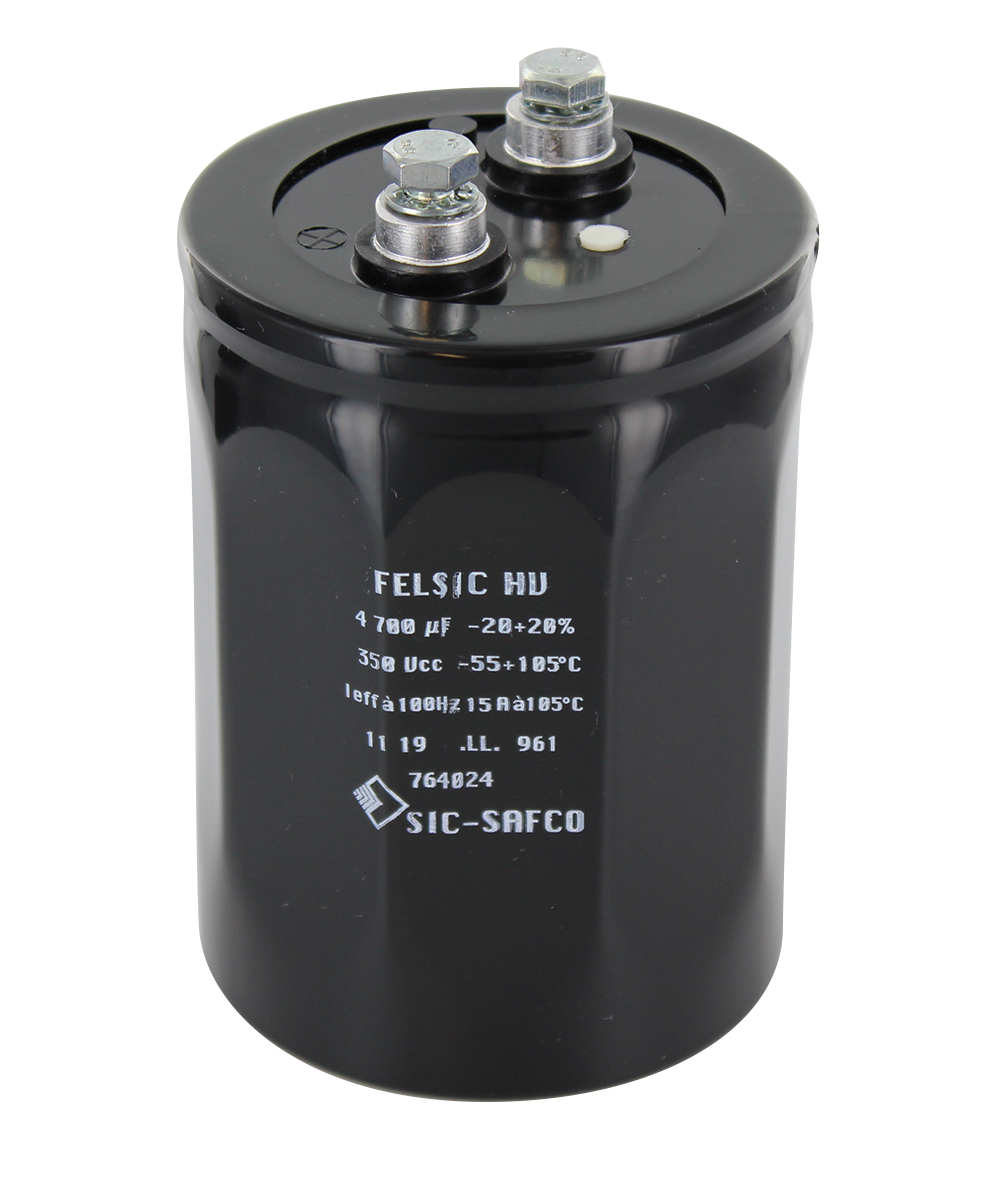 The Felsic HV family of aluminum electrolytic screw terminal capacitors provides great performances in energy density and ultra-long lifetime. For example products can withstand 8 000 hours at 105°C under high values of current which makes them the perfect choice to overcome railway constraints. The family also has one of the lowest ESR for aluminum capacitors, less than 10m0hms in most cases. Products are available for voltages from 160 to 450 Vdc, and offer capacitance values from 1500μF up to 47 000μF. Thus the family is a good compromise between reliability and compacity, with for example 47 000μF @ 160V in a 90x200mm volume.
The Felsic HV family of aluminum electrolytic screw terminal capacitors provides great performances in energy density and ultra-long lifetime. For example products can withstand 8 000 hours at 105°C under high values of current which makes them the perfect choice to overcome railway constraints. The family also has one of the lowest ESR for aluminum capacitors, less than 10m0hms in most cases. Products are available for voltages from 160 to 450 Vdc, and offer capacitance values from 1500μF up to 47 000μF. Thus the family is a good compromise between reliability and compacity, with for example 47 000μF @ 160V in a 90x200mm volume.
Cost-effective common-mode chokes qualified for aerospace
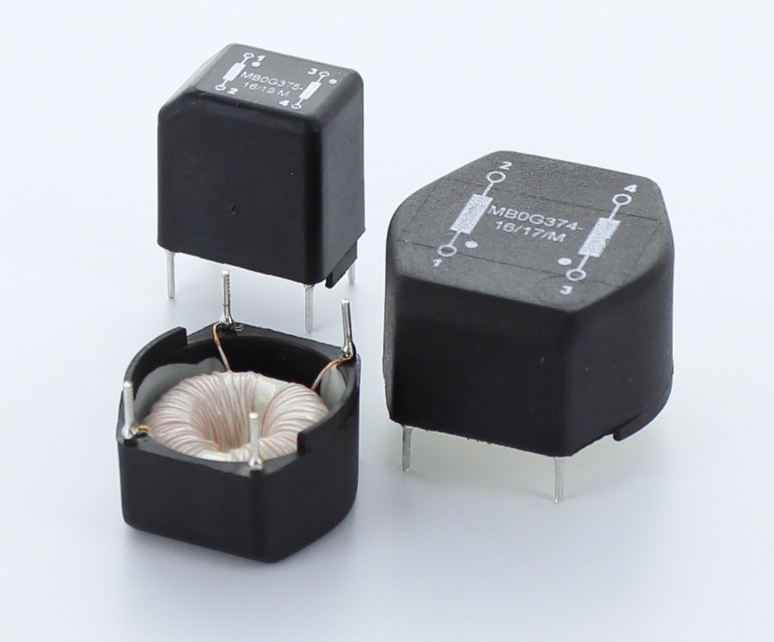 Designed and qualified for aerospace, the TCM series is available in a through-hole package for horizontal and vertical mounting. TCM common-mode chokes are offered with inductances from 0.7 to 47mH under rated currents from 0.3A to 4A, and thoroughly tested by a dielectric withstanding strength at 1500VAC. Their excellent thermal properties allow the TCMs to operate without a hitch from -55°C up to +125°C, which, combined to the high mechanical resistance of the chosen materials (all meeting to UL94 V0 rating) make those products the perfect fit for aviation, defense and transportation industries.
Designed and qualified for aerospace, the TCM series is available in a through-hole package for horizontal and vertical mounting. TCM common-mode chokes are offered with inductances from 0.7 to 47mH under rated currents from 0.3A to 4A, and thoroughly tested by a dielectric withstanding strength at 1500VAC. Their excellent thermal properties allow the TCMs to operate without a hitch from -55°C up to +125°C, which, combined to the high mechanical resistance of the chosen materials (all meeting to UL94 V0 rating) make those products the perfect fit for aviation, defense and transportation industries.
Two new ranges of Metallized Polyester Film Capacitors qualified for space
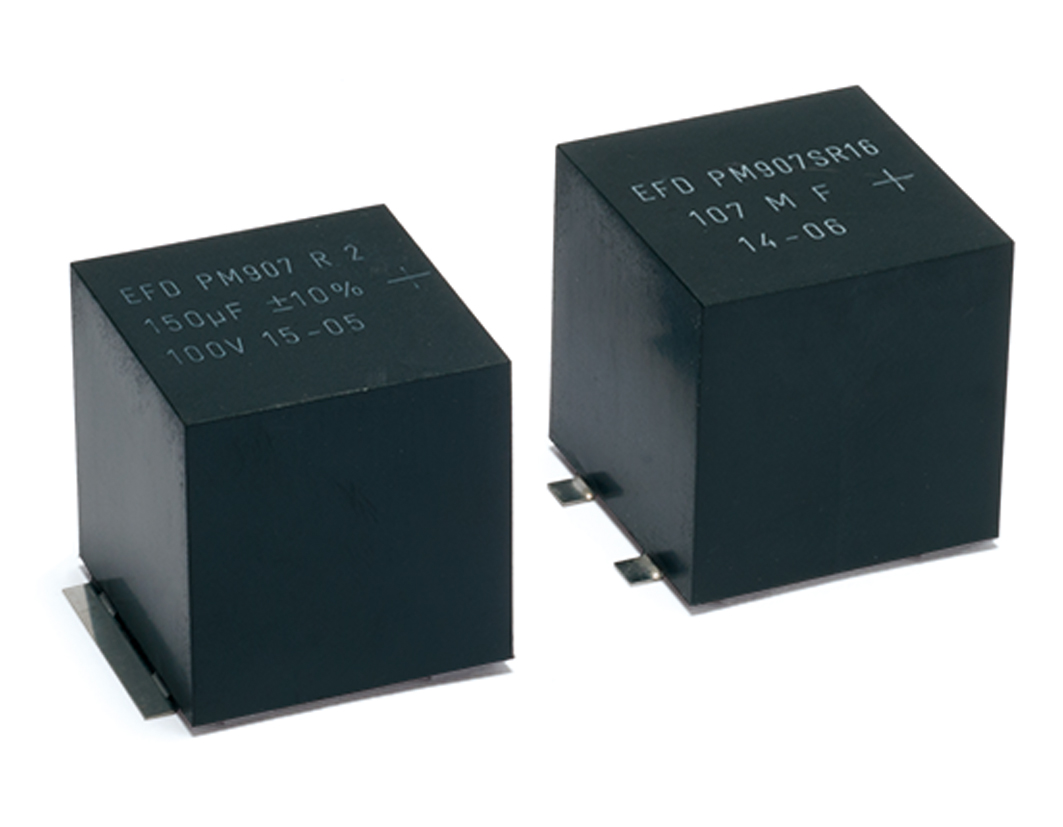 Ranges PM907S and PM948S of Film capacitors obtained the QPL certification from the European Space Components Coordination (ESCC). PM907S and PM948S part of the PM series, are full ranges of Metallized Polyester Film Capacitors. PM907S products are suitable for voltages from 50V up to 1250V and offer capacitance values from 82nF up to 180μF. PM948S can be used with a voltages from 50V up to 630V with capacitance values from 22nF up to 47μF. Both ranges can support extreme conditions with temperatures from -55°C to +125°C, and offer high energy density, low ESR & ESL and high RMS current.
Ranges PM907S and PM948S of Film capacitors obtained the QPL certification from the European Space Components Coordination (ESCC). PM907S and PM948S part of the PM series, are full ranges of Metallized Polyester Film Capacitors. PM907S products are suitable for voltages from 50V up to 1250V and offer capacitance values from 82nF up to 180μF. PM948S can be used with a voltages from 50V up to 630V with capacitance values from 22nF up to 47μF. Both ranges can support extreme conditions with temperatures from -55°C to +125°C, and offer high energy density, low ESR & ESL and high RMS current.
Products are typically being used in SMPS (Switch Mode Poser Suppliers) and BUS filtering.
A new range of high capacitance wet tantalum capacitors
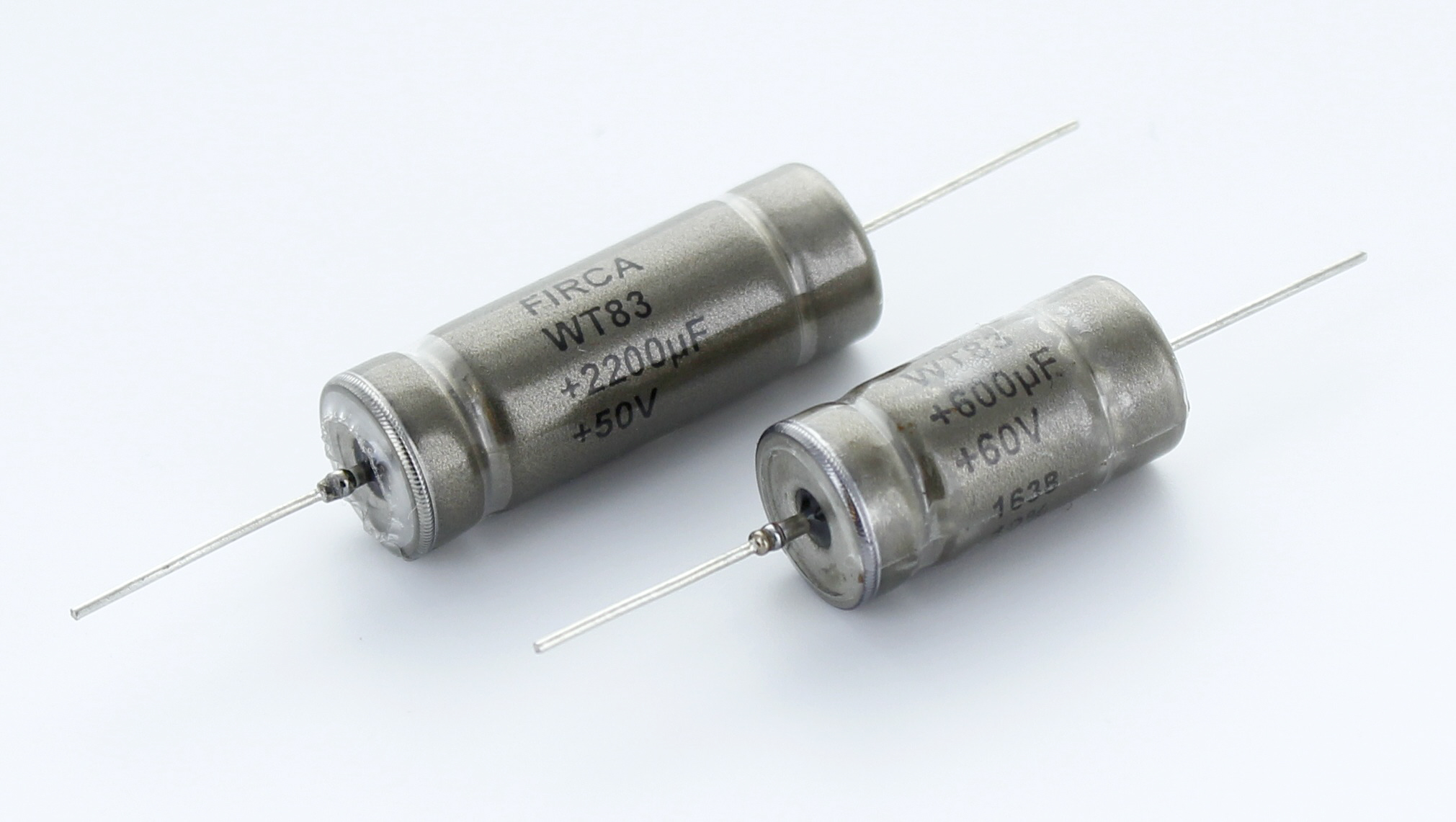 The new wet tantalum WT83 capacitors series is based on the CLR93 MIL specification but with double the capacitance. For instance, WT83 offers 1000µf 100V in a D size case. That is a pass for impactful miniaturization of existing designs by playing on both size, by reducing the PCB footprint, and weight. Besides, thanks to their hermetically sealed package, the WT83 series can withstand high vibrations and shock levels (50g and 100g respectively) which makes them the solution of choice for Aviation, Space and Defense.
The new wet tantalum WT83 capacitors series is based on the CLR93 MIL specification but with double the capacitance. For instance, WT83 offers 1000µf 100V in a D size case. That is a pass for impactful miniaturization of existing designs by playing on both size, by reducing the PCB footprint, and weight. Besides, thanks to their hermetically sealed package, the WT83 series can withstand high vibrations and shock levels (50g and 100g respectively) which makes them the solution of choice for Aviation, Space and Defense.